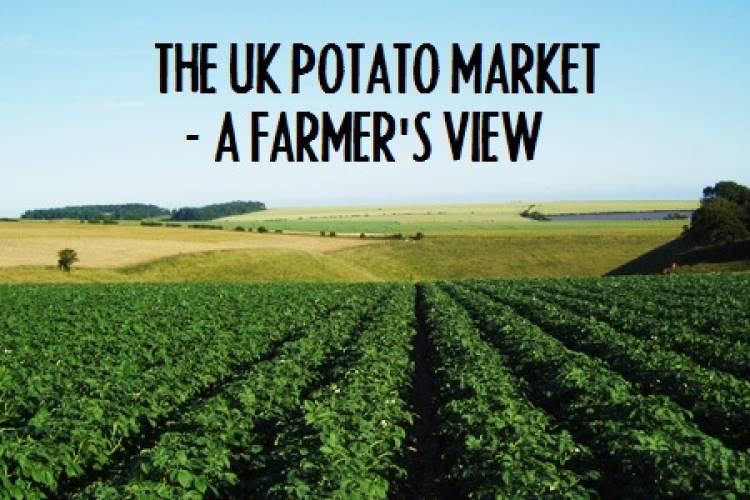The UK potato market – October 2015

The potato market has had a long change-over period from the old 2014 crop to the new 2015. Plentiful supplies of new crop bakers have been very slow to develop compared to most years; every season brings its own challenges!
This year the planting went well albeit a little late. The soil was in good condition and there were very few weather interruptions. All was set for a good start to the 2015 crop but then the spring and early summer turned out to be much cooler than usual so the crop development was very slow. Fortunately the 2014 crop yielded well so there were sufficient stocks in store to fill the gap from old to new. However, the quality of most of the stock in the latter stages of the 2014 crops season was very poor and not suitable for us to use here at Farmhouse. Availability of good quality became very limited so prices rose rapidly as stocks ran out.
The weather during the summer meant that the new season crop was slow to mature so that, as soon as the earliest baker crops became sufficiently mature (ie full skin set), they were used up quickly and prices remained high. Surprisingly, this trend has continued up to now and potato growers are confident that the higher prices will remain for the season.
The main crop varieties were also slow to set skin sufficiently for safe storage and it is only in the last few weeks that stores have been filling for the year ahead. The weather has allowed lifting to progress in good conditions. Most areas are well through their harvesting program and quality seems to be good. We have had some problems with internal blemishes but bruising has not been a major problem as yet so we hope this will be a year of good quality stocks.
In trying to forecast this years settled price levels after this long changeover period, there are a number of elements to the equation. Grower confidence is partly due to the report from the AHDB (the Agricultural & Horticultural Development Board which is the latest name for the British Potato Council) stating that the estimates of the planted area suggest a reduction of more than 7%. This is hardly surprising considering many growers will have lost money in recent years so some will have cut their planted acreage or stopped growing the crop completely.
There are some factors that I thought might have helped to keep the planted area at a higher level. Firstly, alternative crops at the moment are not very profitable either (wheat prices are in the doldrums) so, providing the bank manager would allow it, I would have thought another year of potato growing might have been worth a gamble.
Secondly, one requirement of the new EU farming rules is that farmers have to incorporate crop rotation. Every farmer of a reasonable size has to grow at least three different crops on the farm. This is not a problem for farmers like ourselves who already grow several different crops and have had crop rotation as part of our farming practice for as long as I can remember, but those who have grown wall-to-wall wheat in the past have to introduce other crops. I thought that they may well have looked for potato growers to rent a field from them. Clearly, there have not been enough farmers who have taken this option.
The other important side of the equation is the question of consumption. The sale of fresh potatoes continues to fall despite the continued supermarket price wars. This reduction in consumption might mean that stocks do not move as quickly as growers would like leading, eventually, to lower price expectations.
There is another point, however, to bear in mind. Production levels throughout Northern Europe have not been high so instead of an influx of low cost potatoes coming in from our neighbours on the continent, it is more likely that the UK will be exporting to them.
It is all in the balance and we are still no further with our forecasting for the year ahead. At the moment prices are much higher than last year and we are not seeing any signs of this changing. The most important point, as usual, is that we hope the weather continues to allow lifting until all crops are safely in store.
Rob Bannister









